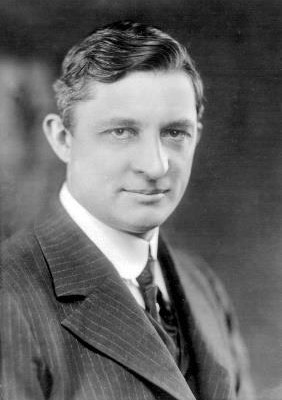Ventilation
Ventilation in buildings is important as it provides occupants with a healthy and comfortable environment.
Ventilation moves outdoor air into a building or a room, and distributes the air within the building or room. The general purpose of ventilation in buildings is to provide healthy air by both diluting the pollutants originating in the building and removing the pollutants from it.
Building ventilation has three basic elements:
- ventilation rate — the amount and the quality of outdoor air that is provided into the space;
- airflow direction — the overall airflow direction in a building, which should be from clean zones to dirty zones;
- air distribution or airflow pattern — the external air should be delivered to each part of the space in an efficient manner and the airborne pollutants generated in each part of the space should also be removed in an efficient manner.
There are three methods that may be used to ventilate a building:
1) Natural Ventilation
2) Mechanical
3) Hybrid (mixed-mode) ventilation
Natural ventilation
Natural ventilation is the process of supplying air to indoor space and removing air from an indoor space without using any mechanical systems. As a result of pressure differences arising from natural forces such as wind and thermal buoyancy, external air follows to an indoor space. Wind driven ventilation arises from the different pressures created by wind around a building or structure, and openings include windows, doors, solar chimneys, wind towers and trickle ventilators. Temperature differences between the interior and exterior results the directional buoyancy force and it allows the buoyancy-driven ventilation. This natural ventilation of buildings depends on climate, building design and human behaviour.
Mechanical ventilation
Mechanical fans drive mechanical ventilation. Fans can either be installed directly in windows or walls, or installed in air ducts for supplying air into, or extracting air from, a room.
Hybrid (mixed-mode) ventilation
Hybrid (mixed-mode) ventilation relies on natural driving forces to provide the desired (design) flow rate. It uses mechanical ventilation when the natural ventilation flow rate is too low.
When natural ventilation alone is not suitable, exhaust fans (with adequate pre-testing and planning) can be installed to increase ventilation rates in rooms housing patients with airborne infection. However, this simple type of hybrid (mixed-mode) ventilation needs to be used with care.
Significance of ventilation
The human need for air must be considered in every building.
Heat from the sun enters buildings in four ways:
1.Radiant heat transfer from roofing material to attic air, which in turn can re-radiate through the ceiling.
2.Entry of certain wavelengths of light through glass windows.
3. Radiant heat transfer from the building materials used for walls.
4. Hot air simply entering through open windows, doors, cracks etc.
Once heat enters your building, it can be slow to dissipate if there’s no way for air to escape. Even with evening temperatures dropping by 10ºC below the temperature inside a building, it can take ages for the building to cool. If the temperature inside remains high during the evening, the building will quickly heat up the next day too. With more careful sealing of gaps to prevent heat loss, the provision of controllable ventilation becomes more important.
Proper ventilation and air conditioning in large commercial buildings, and especially in office buildings, has many benefits. These include some benefits that can contribute to a healthier bottom line.
The environment in the workplace is receiving plenty of attention, with employee morale continuing to be an important consideration for business owners. Furthermore, scientists have proven that a healthy workplace is a productive workplace.
In the UK, buildings are ventilated by a combination of air infiltration and “purpose-provided ventilation” – the forced introduction of heat and cool air into the work-space. Proper ventilation in the office building can only be achieved through this combination. Purpose provided ventilation is defined as, “the controllable air exchange by means of a range of natural and/or mechanical devices such as trickle vents in windows and electric extract fans.”
How ventilation works
Ventilation is particularly important for cooling. The best ventilation systems work by taking warm air out of the building between 6pm and 3am, and replacing it with cooler air. This is called an ‘air change’. As the temperature heats up outside during the day, you then lock up your building to stop heat from coming in. This can be achieved by shading using awnings, curtains, blinds or other mechanisms.
Air changes are also an extremely important way to help maintain ‘air quality’ in your home. A lack of ventilation in your building (or even in parts of your building) can be bad for your health.
Get to know before you do!
Before you plan a ventilation system for your building, you need to know the volume of air in your building and compare that to the capacity of a ventilator. That is, you need to ask how many cubic metres of air needs to be moved each hour, and what sort of mechanisms will allow two to three air changes an hour in your building.
These are the vital calculations. Keep in mind though that when it comes to ventilation it really is a case of getting what you pay for. Whirlybird vents, for example, can be bought for around £35, but you shouldn’t expect to get ‘air conditioning’ type results from them. It just doesn’t happen. Some newer hybrid ventilation systems can move up to 2,400 cubic metres of air per hour while only consuming 40W of power. The trick is to find a cost-effective balance – and one that will work in harmony with any other heating and cooling measures you’ve got in place.
If you’re considering building a passively heated or cooled building, ventilation’s a tricky concern because of the fact that your building will be more or less airtight. In many cases this will require some carefully planned mechanical ventilation (such as an energy recovery ventilator)


